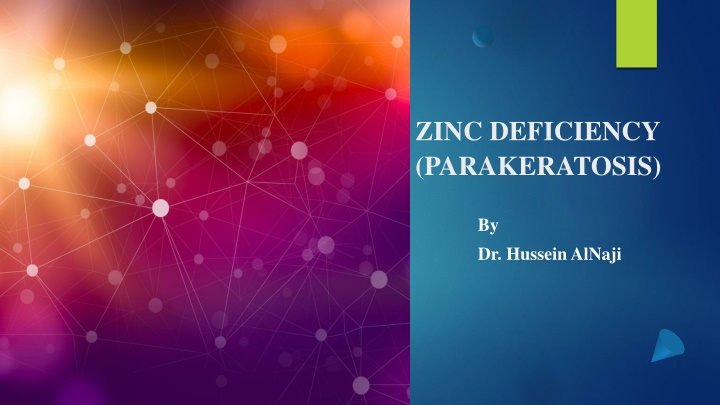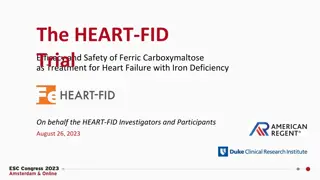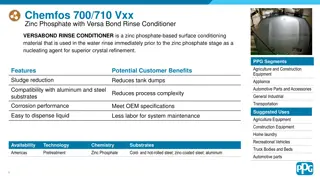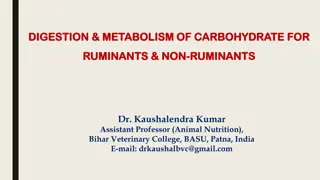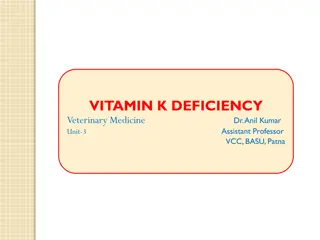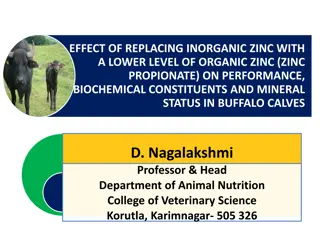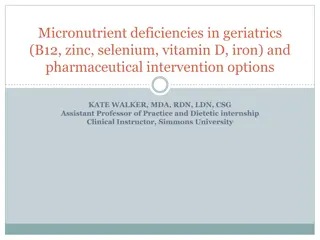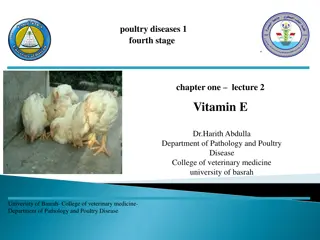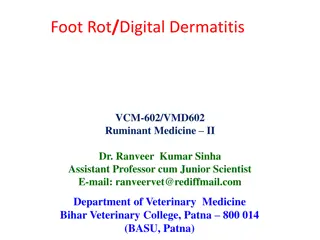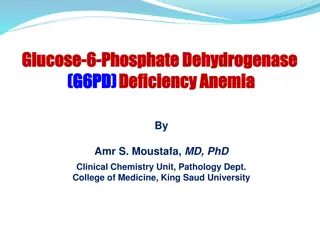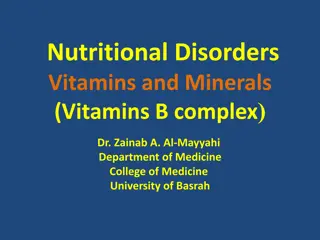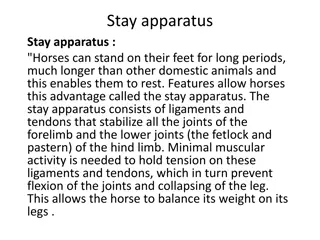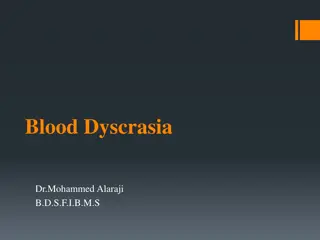Zinc Deficiency in Ruminants
Zinc deficiency in ruminants can result from various factors affecting soil zinc availability and dietary zinc intake, leading to parakeratosis and other health issues. Learn about the etiology, pathogenesis, clinical signs, and more.
Download Presentation

Please find below an Image/Link to download the presentation.
The content on the website is provided AS IS for your information and personal use only. It may not be sold, licensed, or shared on other websites without obtaining consent from the author.If you encounter any issues during the download, it is possible that the publisher has removed the file from their server.
You are allowed to download the files provided on this website for personal or commercial use, subject to the condition that they are used lawfully. All files are the property of their respective owners.
The content on the website is provided AS IS for your information and personal use only. It may not be sold, licensed, or shared on other websites without obtaining consent from the author.
E N D
Presentation Transcript
ZINC DEFICIENCY (PARAKERATOSIS) By Dr. Hussein AlNaji
Etiology 2 Ruminants a. A primary zinc deficiency resulting from low dietary zinc in ruminants is rare but does occur. Many factors influence the availability of zinc from soils, including The degree of compaction of the soil and the nitrogen and phosphorus concentration. 1. 2. The risk of zinc deficiency increases when soil pH rises above 6.5 and as fertilization with nitrogen and phosphorus increases. 3. Some legumes contain less zinc than grasses grown on the same soil, and zinc concentration decreases with aging of the plant.
b- Several factors may deleteriously affect the availability of zinc 3 to ruminants and cause a secondary zinc deficiency. These include 1- The consumption of immature grass, which affects digestibility. 2- The feeding of late-cut hay, which may be poorly digestible. 3- The presence of excessive dietary sulfur. 4- The contamination of silage with soil at harvesting can also affect the digestibility of zinc.
PATHOGENESIS The pathogenesis of zinc deficiency is not well understood. 1. Zinc is a component of the enzyme carbonic anhydrase, which is located in the red blood cells and parietal cells of the stomach, and is related to the transport of respiratory carbon dioxide and the secretion of hydrochloric acid by the gastric mucosa. 2. Zinc is also associated with RNA function and related to insulin, glucagon, and other hormones. 3. It also has a role in keratinization, calcification, wound healing, and somatic and sexual development. 4. Because it has a critical role in nucleic acid and protein metabolism, a deficiency may adversely affect the cell-mediated immune system. 5. Zinc deficiency impairs vitamin A mobilization from the liver
6- Failure of keratinization resulting in parakeratosis, loss and failure of growth of wool and hair, and lesions of the coronary bands probably reflects the importance of zinc in protein synthesis. 7- The bones of zinc-deficient ruminants reveal abnormal mineralization and a reduction of zinc concentration in bones and cartilage. 8- Retarded testicular development occurs in ram lambs, and complete cessation of spermatogenesis suggests impairment of protein synthesis.
6 Clinical signs Ruminants In the naturally occurring disease in cattle, in severe cases, parakeratosis and alopecia may affect about 40% of the skin area. The lesions are most marked on the muzzle, vulva, anus, tailhead, ears, backs of the hind legs, kneefolds, flank, and neck. Most animals have below-average body condition and are stunted in growth. After treatment with zinc, improvement is apparent in 1 week and complete in 3 weeks.
Experimentally produced cases exhibit the following signs: 7 1. Poor growth. 2. A stiff gait. 3. Swelling of the coronets, hocks, and knees. 4. Soft swelling containing fluid on the anterior aspect of the hind fetlocks. 5. Alopecia. 6. Wrinkling of the skin of the legs, scrotum, and neck and head, especially around the nostrils. 7. Hemorrhages around the teeth and Ulcers on the dental pad.
Clinical pathology 8 Serum zinc concentrations lower than normal. Necropsy findings Parakeratosis. Diagnostic confirmation Histology of skin lesions and serum zinc levels. Treatment Zinc oxide suspended in olive oil and given IM at a dose of 200 mg of zinc for adult sheep and 50 mg of zinc for lambs will result in a clinical cure within 2 months. The oral administration of zinc at the rate of 250 mg zinc sulfate daily for 4 weeks resulted in a clinical cure of zinc deficiency in goats in 12 to 14 weeks
9 Thank You
